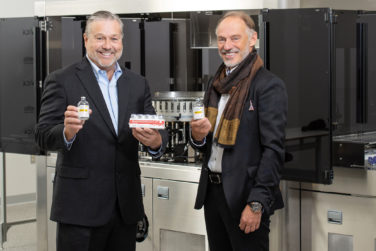As most everyone in our industry knows, bringing a new therapeutic product through the drug approval process in the United States is an incredibly long and arduous task—one that takes an average of 12 years and often costs upwards of $1 billion. And, to add insult to injury, the majority of investigational drugs never make it through this process. If you master the regulatory gauntlet and receive an FDA approval, there’s still the challenge of communicating about the new therapeutic to the right audiences.
When an innovative new drug indicates potential to offer significant advantages for patients facing serious disease, everything possible should be done to speed its development and market availability, of course without sacrificing scientific integrity or safety. The U.S. Food and Drug Administration (FDA) has previously relied on three programs designed to shorten the development and review pathway for promising new therapies: Priority Review, Accelerated Approval and Fast Track. Despite widespread use of these programs, concerns persisted that they were not sufficient to keep pace with scientific advances and to propel important new therapies to market.
A New Development Pathway
Enter a new expedited development pathway—FDA’s Breakthrough Therapy designation. First approved in July 2012 as a provision in the Food and Drug Administration Safety and Innovation Act, the Breakthrough Therapy designation provides the FDA with new ways to help drug developers speed the development and review of drugs where preliminary clinical evidence indicates the drug may offer a substantial improvement over available therapies for patients with serious or life-threatening diseases. The Breakthrough Therapy designation includes all of the Fast Track program features, as well as more intensive FDA interaction and guidance, beginning as early as Phase I trials. Eagerly awaited draft guidance on the new designation was issued to industry this summer.
This designation pathway is a much-needed acknowledgement of the current reality of drug development, and really, the way our world has changed overall. We operate in a real-time, personalized environment in almost every aspect of our lives. From a scientific standpoint, the industry has expanded to include targeted therapies based on the actual science behind disease. In addition, the primary focus is no longer on whether a new product works, but on what specific advantages it can provide specific patients in need.
As you might expect, the Breakthrough Therapy designation is catching on fast with industry, which rightly senses an opportunity to save significant time—and money—getting new products from the lab to market. Initial expectations were for the FDA to grant just a handful of breakthrough designations per year. However, in under a year since its introduction, the FDA has received 92 requests (as of September 30, 2013) for new drug or biologics applications—27 requests for Breakthrough Therapy designations have been granted and 41 have been denied, with the remainder still under a promised 60-day review. It’s extremely exciting that there are over two dozen products currently in development that offer such promise for patients that the FDA is willing to engage with the industry, and it’s a sure sign the program is already a huge success.
Will History Repeat Itself?
While this progress is great, one has to ask: What are the implications of the immense popularity of the new Breakthrough Therapy designation? Can the FDA provide the needed resources to keep up this pace? And, importantly, will the Breakthrough Therapy designation soon become the norm in drug development? If so, will its value eventually be diminished in the eyes of the media and patients?
Almost exactly 30 years ago, Congress approved the Orphan Drug Act (ODA) to encourage the development of treatments for the millions of Americans with rare diseases. At that time, it was one of the hottest trends in the drug development market and the ODA clearly drove innovation in orphan and rare diseases, where there was little action and incentive before. In the decade before the law was passed, only 10 new drugs were developed by the industry for people with rare diseases. Since 1983, more than 2,700 potential treatments have entered the development process as “orphan products” and the FDA has approved more than 400 new drugs under the act—lending new hope and treatment options for thousands of patients in desperate need around the world. From a communications perspective, the orphan drug designation was a surefire way to generate a great deal of media attention for a new product—demonstrating scientific rigor, corporate dedication and innovation.
Is history repeating itself with the Breakthrough Therapy designation, particularly on the communications front? When the first companies began applying for and receiving orphan designations, followed by the first rounds of approvals, the news was met with much fanfare and excitement with tons of media coverage and accolades. Now orphan designations barely get any notice in the press, even though they are still very important milestones and tremendous accomplishments for a company.
I imagine that if we flash forward 20 or 30 years, this collaborative way that the FDA and companies are working together to speed promising therapies to market might just be the normal way of doing business. And, as communicators, we’ll be required to continue to demonstrate the impressive science behind therapeutics in a “reinvented” way—a way that’s personalized and tailored to specific audiences, not much different from the actual science itself.
Maximizing On a Breakthrough Therapy Designation
In the meantime, I advise communicators to take full advantage of the current popularity and interest in the Breakthrough Therapy designation, beyond just issuing a press release stating their product has received it. It will behoove marketers to tell the right story, to provide the context around the science. Now is the time to lay the groundwork for long-term understanding—to educate media on the specific scientific advantages, to more deeply engage patient advocacy groups who could help enroll clinical trials and inform patients, and to prepare consumers for the future of drug development, where the most compelling science story wins the day. The specifics of how and why a company’s product earned the Breakthrough Therapy designation should be interwoven into all company communications, from earnings reports to internal newsletters to marketing materials. Make the science matter, and by telling the full story, marketers can win with regulators, media, investors, healthcare providers and most importantly, patients.
There are already signs that FDA may slow the pace of Breakthrough Therapy designation approvals. In August 2013, FDA denied 10 requests for Breakthrough Therapy designations and approved none in a four-week period. Perhaps the agency is already getting better at identifying “true” breakthroughs. However, for now, companies are basking in the glow of the new designation both from a scientific and communications perspective, the improved development process and the accompanying attention.
All in all, a faster route to market for important new therapies is a win for patients, so count me in as a fan, with the hope that this does become routine but that communications around the important science driving Breakthrough Therapy designations remain robust.




